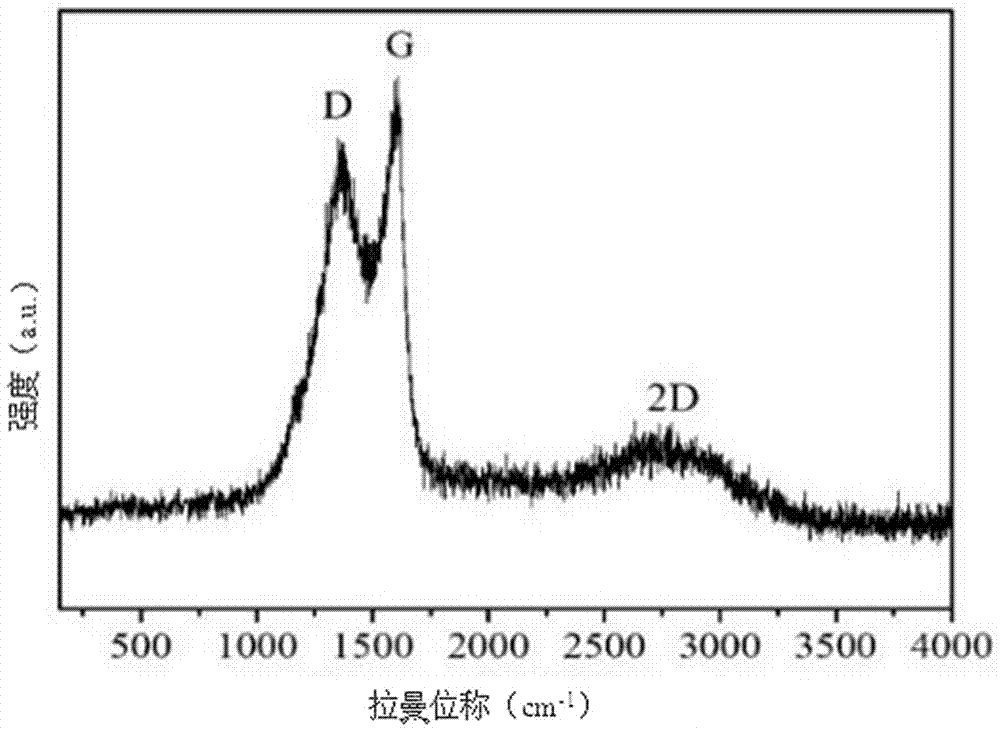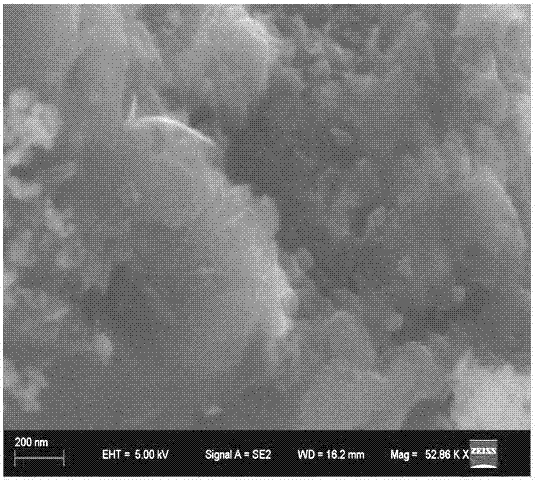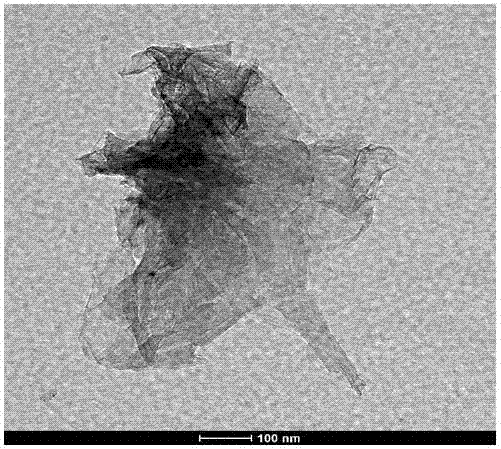Method for preparing graphene by using halloysite nanotubes having curly layered structure
A technology of halloysite nanotubes and curled layers, applied in graphene, nanocarbon, chemical instruments and methods, etc., can solve the problem of difficulty in preparing high-quality graphene or graphene-like materials, poor material uniformity, and preparation costs. Advanced problems, to avoid secondary aggregation, uniform number of layers, low preparation cost
- Summary
- Abstract
- Description
- Claims
- Application Information
AI Technical Summary
Problems solved by technology
Method used
Image
Examples
Embodiment 1
[0033] The powdered halloysite nanotubes with curly layered structure were dried in a constant temperature oven at 100 °C for 24 h. Take 5g of halloysite nanotubes, mix 60g of dimethyl sulfoxide and 6mL of deionized water, stir at room temperature for 72 hours, wash with ethanol 2-3 times, and dry at 60°C for 48 hours to obtain dimethyl sulfoxide / halloysite nanotubes Tube intercalation complex.
[0034] Take 5g of dimethyl sulfoxide / halloysite nanotube intercalation complex and 33g of acrylonitrile in a round-bottomed flask, and react with magnetic stirring at 80°C for 6h, then wash the product 2-3 times with absolute ethanol, and dry at 60°C After 24 hours, the acrylonitrile / halloysite nanotube intercalation composite was obtained.
[0035] The acrylonitrile / halloysite nanotube intercalation composite was heat-treated at 200° C. for 5 h to polymerize acrylonitrile in situ to obtain a halloysite / polyacrylonitrile composite.
[0036] The halloysite-polyacrylonitrile composite...
Embodiment 2
[0040] The powdered halloysite nanotubes with curly layered structure were dried in a constant temperature oven at 100 °C for 24 h. Take 5g of halloysite nanotubes, 60g of potassium acetate and 4mL of deionized water, grind and mix them evenly in a mortar, place at room temperature for 24 hours, wash with absolute ethanol 2-3 times, and dry at 60°C for 24 hours to obtain halloysite / potassium acetate intercalation complex.
[0041] Take 40g of acrylamide, add it to 50mL of ethanol solution, stir to dissolve completely, pour it into a round bottom flask, and add 5g of halloysite / potassium acetate intercalation complex, and react with magnetic stirring at 100°C for 10h, then wash the product with ethanol for 2 -3 times, drying at 80°C for 24 hours to obtain halloysite-acrylamide intercalation complex. The halloysite-acrylamide intercalation composite was heat-treated at 350°C for 10 hours to obtain the halloysite / polyacrylamide composite.
[0042] The halloysite-polyacrylamide ...
Embodiment 3
[0045]The powdered halloysite nanotubes with curly layered structure were dried in a constant temperature oven at 100 °C for 24 h. Take 5 g of halloysite nanotubes, 55 g of nitrogen methyl formamide and 7 mL of deionized water, mix them, stir and react at room temperature for 72 hours, then wash with absolute ethanol for 2-3 times, and dry at 60°C for 48 hours to obtain nitrogen methyl formamide Amide / Hallosite Nanotube Intercalation Complex.
[0046] Take 5g of nitrogen methyl formamide / halloysite nanotube intercalation complex, add 40g of acrylonitrile into a round bottom flask, stir and react with magnetic force at 90°C for 5h, wash with absolute ethanol 2-3 times, and dry at 60°C After 24 hours, the acrylonitrile / halloysite nanotube intercalation composite was obtained. The acrylonitrile / halloysite nanotube intercalation composite was heat-treated at 350° C. for 5 h to obtain the halloysite / polyacrylonitrile composite.
[0047] Put the halloysite-polyacrylonitrile compos...
PUM
| Property | Measurement | Unit |
|---|---|---|
| length | aaaaa | aaaaa |
Abstract
Description
Claims
Application Information
 Login to View More
Login to View More - R&D
- Intellectual Property
- Life Sciences
- Materials
- Tech Scout
- Unparalleled Data Quality
- Higher Quality Content
- 60% Fewer Hallucinations
Browse by: Latest US Patents, China's latest patents, Technical Efficacy Thesaurus, Application Domain, Technology Topic, Popular Technical Reports.
© 2025 PatSnap. All rights reserved.Legal|Privacy policy|Modern Slavery Act Transparency Statement|Sitemap|About US| Contact US: help@patsnap.com



